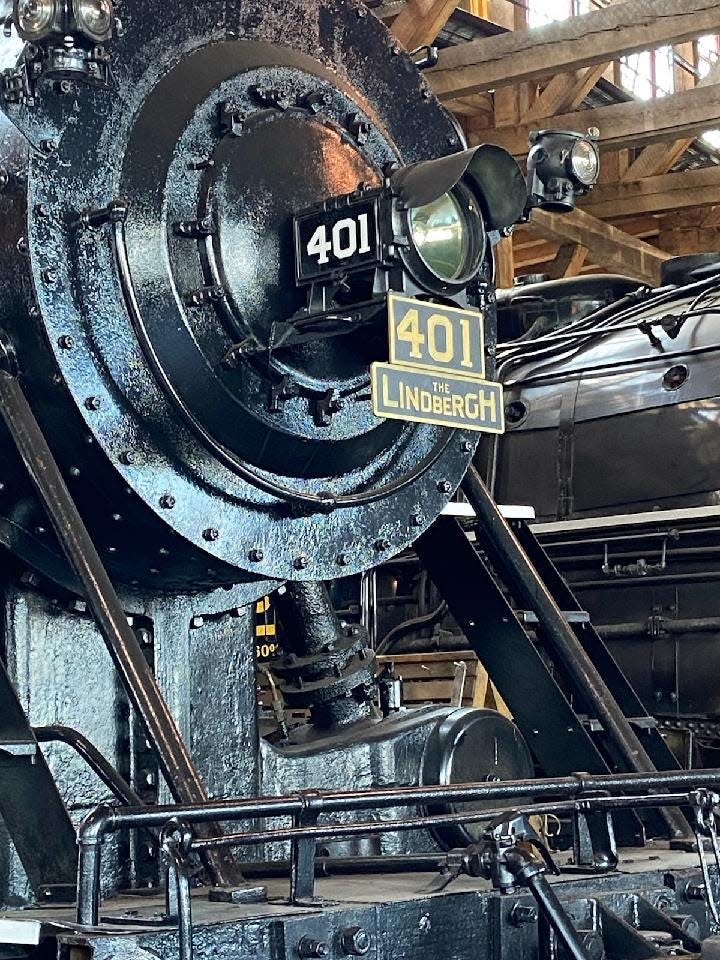Over the Garden Fence: A trip to The Age of Steam Roundhouse museum
It began as a bus trip from Galion "to the middle of nowhere." We all have heard this claim before, but this time it was the closest to truth that my travels have ever come. Sponsored by the Friends of the Big 4 Depot in Galion, the destination by motorcoach promised excitement. Bill and I and Janet and Paul Nance traveled to Wooster where we used Ohio 250 for a time. The bus driver claimed a knowledge of the Amish country and the roads. He did manage well — routes 552, 201, and 93. These are only a sample of the routes caught from the window.

Eventually we rolled into The Age of Steam Roundhouse Museum. A video pointed out all kinds of notions to watch for in this working museum. Walking only between yellow lines, not touching too much unless asked by the guide, Glenn. Dan came with him in case any one of us had to return to the center. Oil and grease, tools and equipment might pose danger.
This fully functional roundhouse is miles from any railroad tracks. Jerry Jacobson dreamed of this place as a home for the many trains he held in his collection. He brought together the largest private collection of steam locomotives in the world. It is the first one to be constructed since 1951. It is estimated that $33 million accomplished his vision.
Many locomotive treasures
That said let me summarize a few of the treasures seen in the hour-and-a-half tour. Engine #14 was the smallest; it came from Pittsburgh, Pa. Engine #401 The Lindbergh built in 1928 was retired in 1939 then purchased by BIrmingham, Alabama. It went on to Wisconsin where it was found to be too large. The cost to bring it to the roundhouse was about $90,000. Engines #9 and #33 were built by the Baldwin Locomotive Works in Philadelphia, Pa. The two managed different tasks — one hauling ore, the other wood.
We saw locomotives with couplings which enabled one engine to link up with another. Cowcatchers were viewed, one of wood, Most engines were painted black but one was built with graphite, a heat resistant substance giving it a gray color. Two engines were operated with compressed air.
We saw #1293, a very capable train with easy upkeep which was used on the Ohio Central. It is known as the Terror Train when used in a movie; it moved along at 70 miles per hour. The Gettysburg, #1278, ran in the 1970s to 1990s and became notorious when the water gauge level was faulty and not monitored, leading to an explosion which burned two crewmen and the engineer who later died of his burns.
Railroads were dangerous
With many more notes to share, let me say that the anecdotal material was fascinating. Glenn pointed out that in 1915 when the Titanic sank taking 1,500 lives, railroad losses totaled 12,000. It illustrated the danger of working and travel on railroads.
What made this so special is the fact that you can only visit the Roundhouse Museum in a tour group with a guide. This would be an excursion worth repeating.
You may wonder about how this has anything to do with "Over the Garden Fence." Let me admit that viewing the well-manicured homes along the highways, most planted for the growing season, came close to serving as a rolling garden tour.
Mary Lee Minor is a member of the Earth, Wind and Flowers Garden Club, an accredited master gardener, a flower show judge for the Ohio Association of Garden Clubs and a former sixth grade teacher.
This article originally appeared on Bucyrus Telegraph-Forum: Over the Garden Fence: The Age of Steam Roundhouse museum

